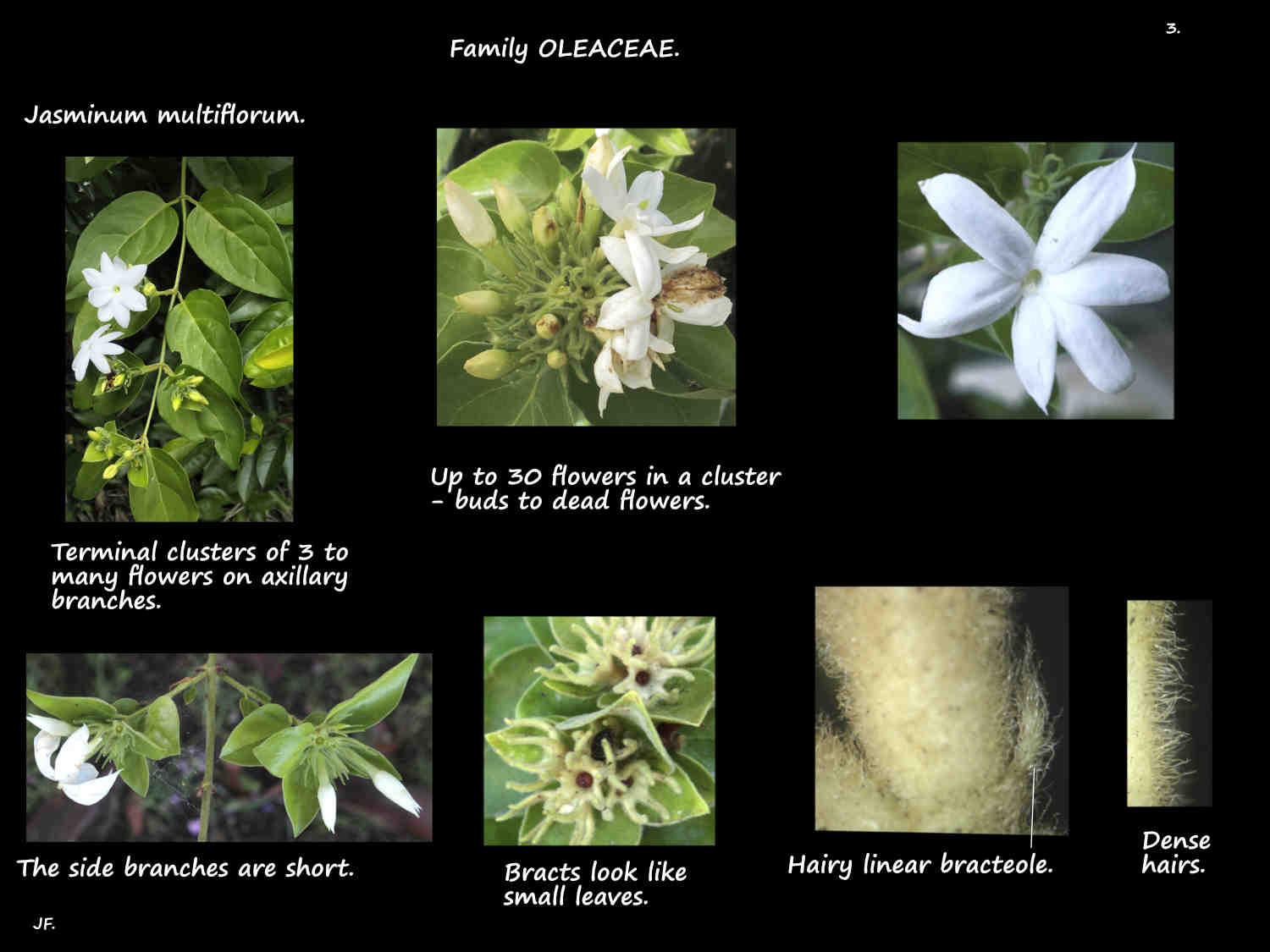Jasminum multiflorum.
Star, Hairy or Winter jasmine is native from India to Indo-China.
It is widely cultivated and probably naturalised in Queensland.
Synonyms include Jasminum multiflorum f. pubescens and Jasminum pubescens.
Seen mostly as a sprawling shrub with thin arching stems 1 to 3 m long.
With support it becomes a weak climber up to 6 to 10 m high.
Branchlets are round in cross section and have dense hairs.
The simple pale brown to yellowish hairs are twisted and kinked.
Lateral spread is by root suckers and long runners that root at the nodes.
The opposite leaves are on a densely hairy petiole 5 (10) mm long.
The petiole is jointed (articulated) allowing the leaf to fall off easily.
The simple ovate to heart-shaped blades are around 3 to 7 cm long and 2 to 5 or 6 cm wide.
The tip is rounded, often with a mucro (short abrupt point), or it tapers with concave edges to a point (acuminate).
Young leaves are densely hairy.
Older leaves have few or no hairs on the upper surface.
The lower surface usually has curved yellowish hairs especially along the veins and near the edge.
There are 4 or 5 pairs of veins from the midrib but others are faint.
Inflorescences are terminal on the short axillary side branches.
Each tight cluster has 3 to many flowers on pedicels 0 to 3 mm long.
At the base of each branch is an ovate leaf-like bract up to 2 cm long.
The pedicels have linear bracteoles up to 5 mm long.
Both have dense hairs.
Plants have some flowers for most of the year.
The green funnel-shaped calyx has a tubular base up to 3 mm long.
The 6 to 9 linear lobes are up to 1 cm long.
There are dense pale brown hairs on the outer surface and few on the inner.
The white corolla has a narrow tubular base 1 to 2 cm long.
The 7 to 9 narrow elliptic to oblong lobes are up to 1.5 or 2 cm long.
The short filaments of the 2 stamens insert near the top of the corolla tube.
The oblong anthers, around 5 mm long have an apical appendage.
The 2 carpels, each with 2 ovules, develop separately joined only by a basal septum.
The style, with a bilobed stigma may be short or long and lie in or above the corolla tube (heterostylous).
The fruit is a berry that is paired (didymous) if both carpels develop or single if one aborts.
The 5 mm black or deep blackish-purple berries are surrounded by the calyx lobes.
J.F.







